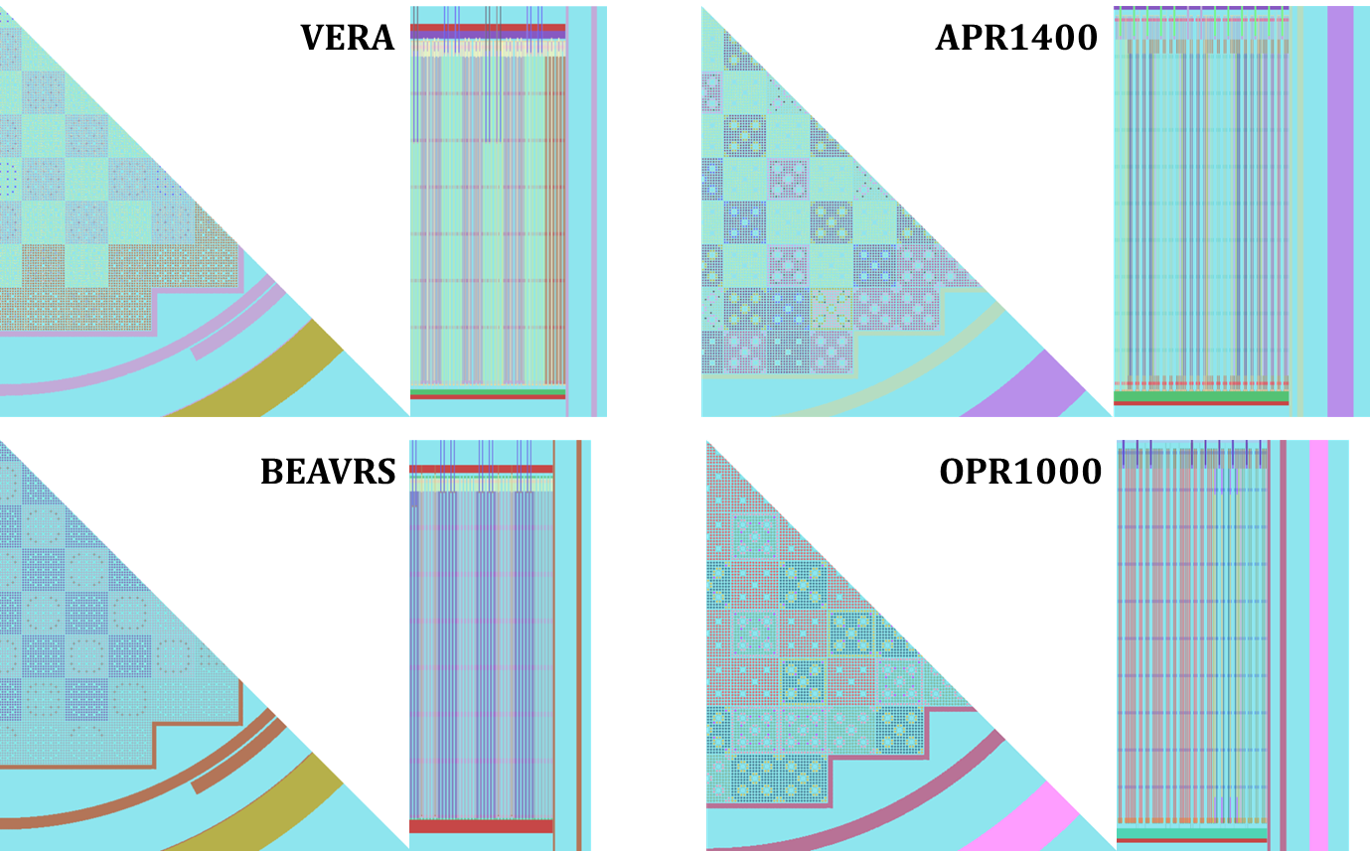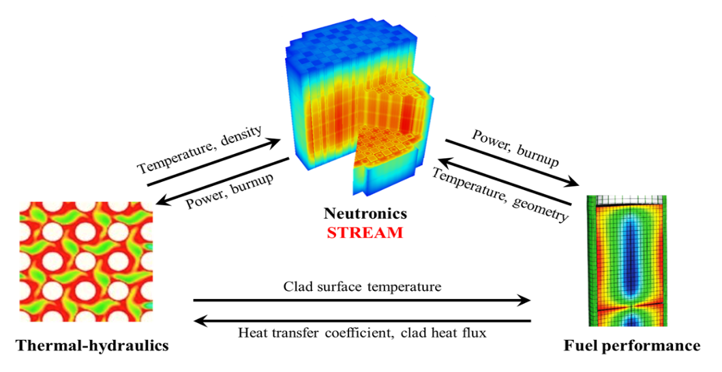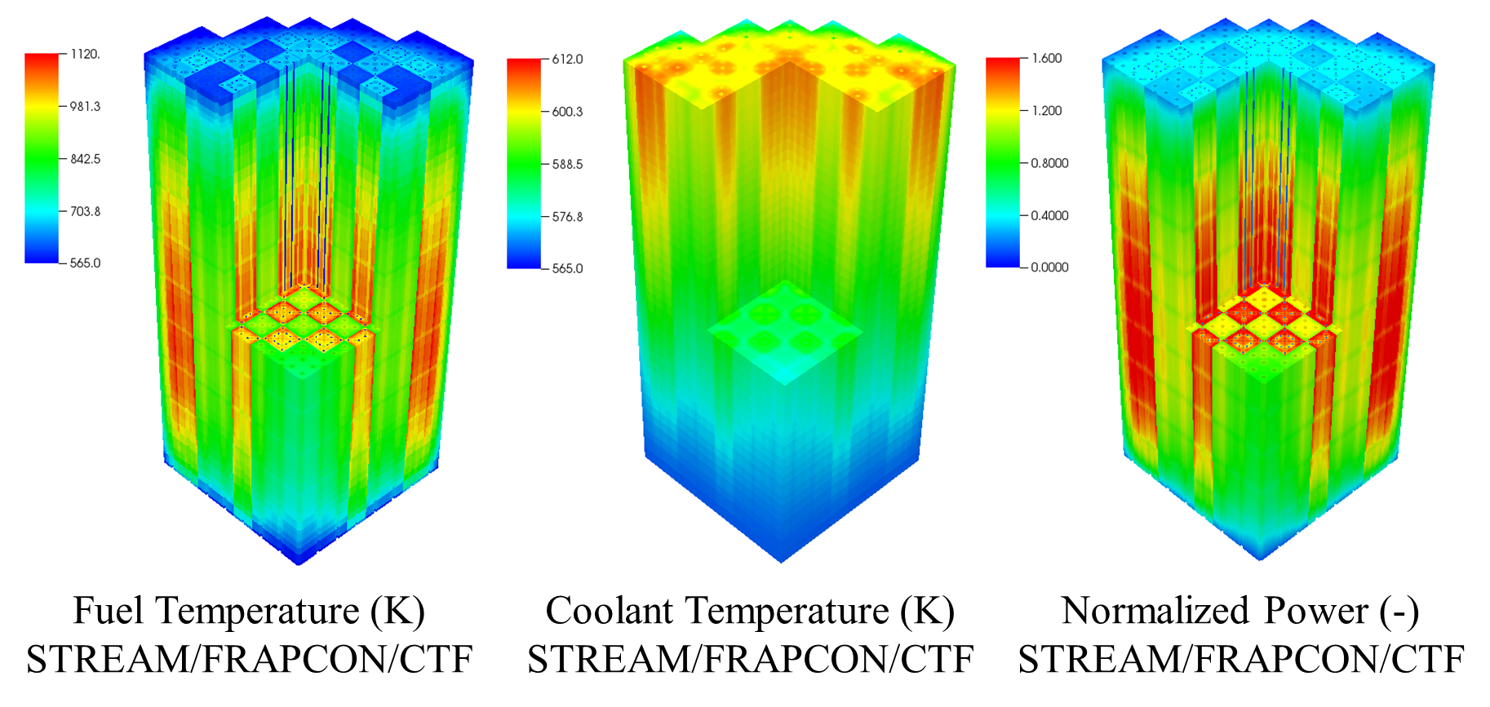Download Intro_STREAM
STREAM 3D
The Recommended Publication for Citing
- Sooyoung Choi, Changho Lee, Deokjung Lee, “Resonance Treatment using Pin-Based Pointwise Energy Slowing-Down Method,” J. Comput. Phys., 330: 134-155. http://dx.doi.org/10.1016/j.jcp.2016.11.007 (2017)
- Sooyoung Choi, Deokjung Lee*, “Three-Dimensional Method of Characteristics/Diamond-Difference Transport Analysis Method in STREAM for Whole-core Neutron Transport Calculation”, Comput. Phys. Commun., https://doi.org/10.1016/j.cpc.2020.107332 (2021)
- Anisur Rahman, Hyun Chul Lee, Deokjung Lee*, “High Fidelity Transient Solver in STREAM based on Multigroup Coarse-Mesh Finite Difference Method,” Nucl. Eng. Tech., 55(9): 3301-3312, https://doi.org/10.1016/j.net.2023.05.019 (2023)
- Anisur Rahman, Hyun Chul Lee*, Deokjung Lee*, “High Fidelity Transient Analysis with STREAM based on the Predictor-Corrector Quasi-Static Method,” Nucl. Sci. Eng., 198: 545-564, https://doi.org/10.1080/00295639.2023.2194219 (2024)
Introduction
A neutron transport analysis code, STREAM (Steady state and Transient REactor Analysis code with Method of Characteristics), has been developed to perform a whole LWR core calculation with the direct transport analysis method and the two-step method. Numerous advanced features, especially resonance treatment methods, have been developed and implemented in the STREAM code for higher accuracy and performance. STREAM with the advanced methods has order of ~100 pcm accuracy in LWR analyses. STREAM has capabilities to analyze the whole LWR core through the two-step (with PARCS or RAST-K 2.0) method and direct transport method (2-D and 3-D).
Features
Direct 3D core design
– 3D MOC-DD method
– Hybrid MPI/OPENMP parallelization
– Thermal expansion
– Fuel assembly shuffling/refueling
– Thermal-hydraulics (TH) feedback
– Equilibrium Xe feedback & Critical boron concentration search
– Critical control rod search for SBF (soluble boron free) reactor
– Transient calculation based on CMFD and PCQM
Multi-physics
– Gamma contribution to power with gamma transport
– STREAM 3D coupled with CTF/FRAPCON
– STREAM 3D coupled with CUPID
Multi-group Cross-Section Generation
– Pin-based pointwise energy slowing-down method
– Equivalence theory for structure material
– Resonance upscattering correction
– Enhanced neutron current method
– Resonance interference factor library method (option)
– Inflow transport correction
Transport Solver
– Method of Characteristics
– T-Y optimum quadrature sets
– Assembly modular ray tracing method
– Direct neutron path linking method
– P0~P5 scattering source treatment
– Coarse mesh finite difference acceleration
– Assembly-wise domain decomposition
– Axially-Radially node-wise domain decomposition
Depletion
– Matrix exponential method
– Chebyshev rational approximation method
– Chain with ~1400 isotopes
– Predictor/corrector
3D whole core modeling
Functions for multi-cycle simulation
(restarting/unfoldingshuffling/reloading)
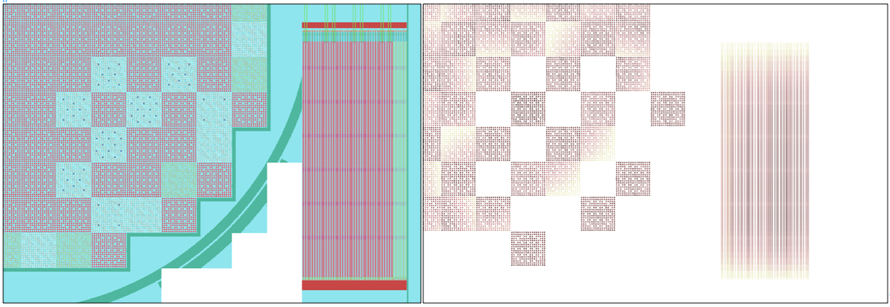
Core benchmark
- OPR1000 HFP cycle N & N+1, APR1400 cycle N
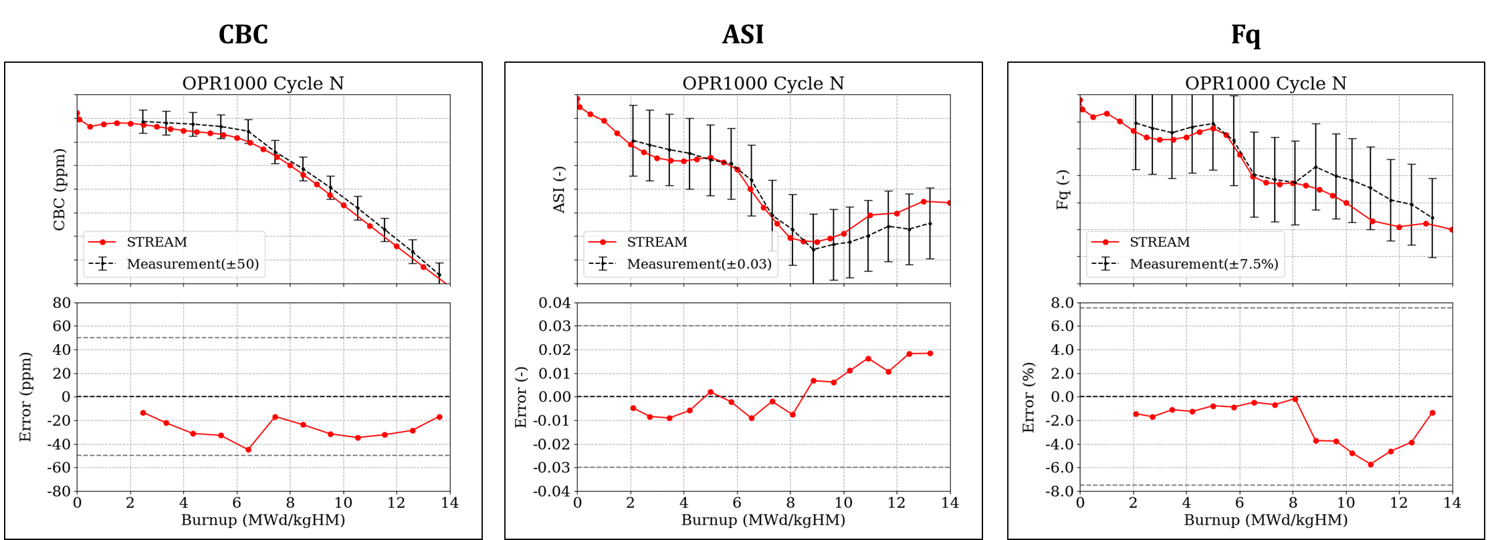
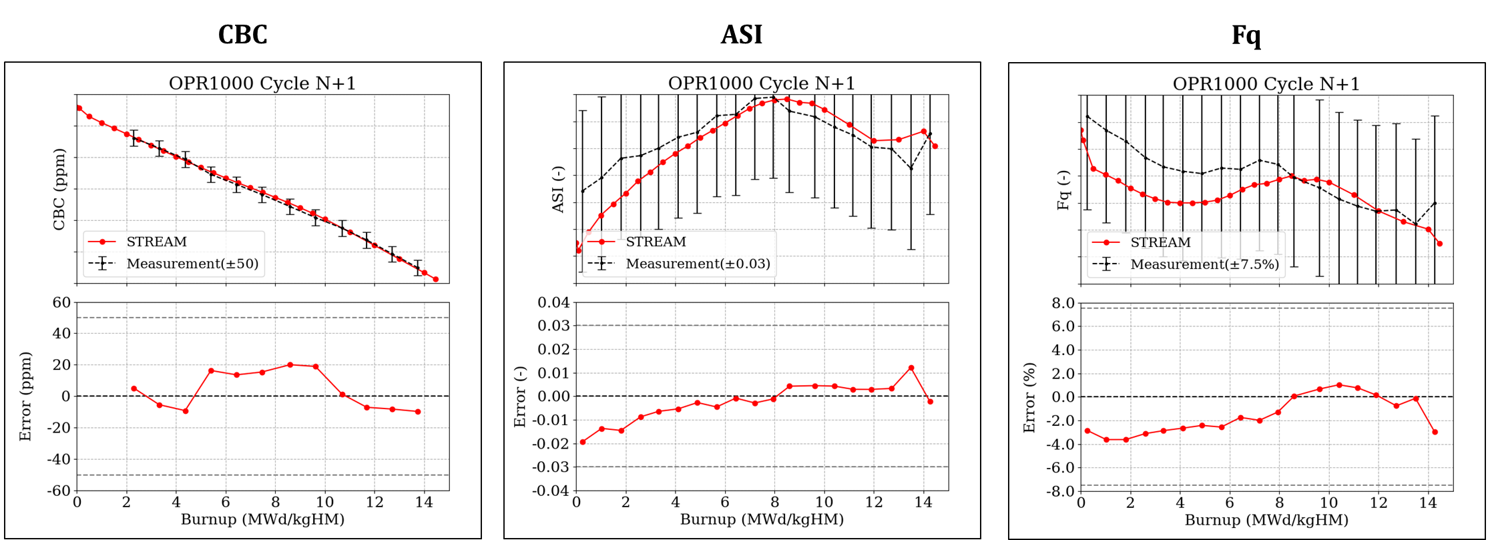
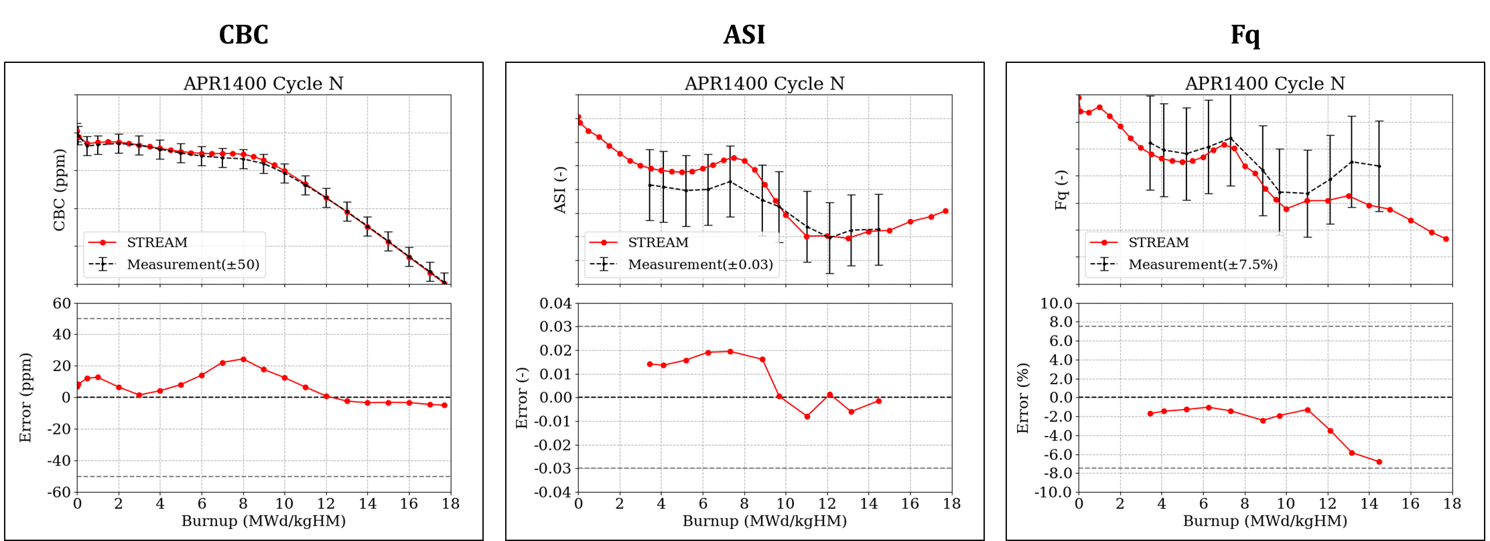
Multi-physics coupling with CTF/FRAPCON
Rod Ejection Analysis – SPERT III E-Core


